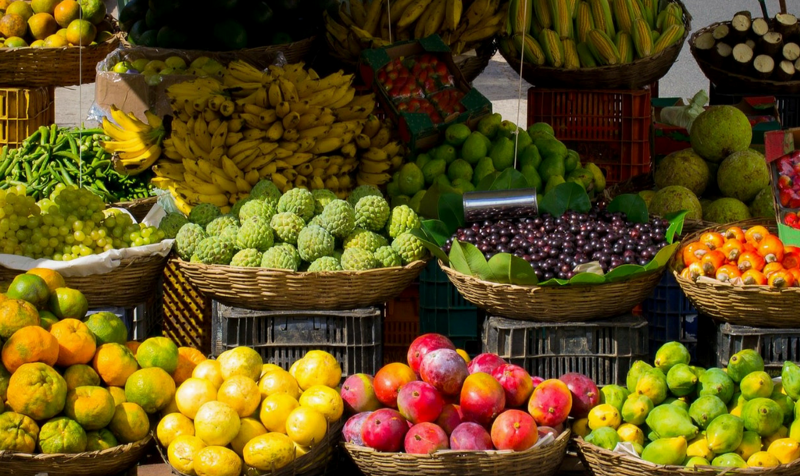
Food markets have been affected by several challenges over the years. In order to understand the cost of making a meal in Kenya, you must first understand the cost structure of the distribution of agricultural commodities.
The retail price you pay for your vegetables, cereal, fruits, what have you, is a result of a combination of factors.
First, there’s the transportation costs from the farm to the market, cess tax, brokers’ fees (despite brokerage being crucial for businesses, in Kenya, it has been used at the expense of traders), and market levies which all contribute to more than half of the total cost of your meal.
This is according to findings by Kenya Markets Trust, an organization that partners with public and private sectors to promote sustainable growth in markets.
What Exactly Is Produce Cess?
Produce cess or cess fees is a form of tax charged by county governments on goods when they move across county borders. The revenue raised, according to Kenyan law, is to be invested back into the improvement of production and distribution of the taxed commodities.
This investment could be in the form of maintenance of roads or other services related to the agricultural sector from which the cess money was levied. This rarely happens, however. (More on this later)
Cess (which in some counties such as Kiambu is referred to as infrastructure maintenance fee) is levied on agricultural and fishing products produced or supplied for commercial purposes such as maize, milk, cattle, vegetables, fish, fruits, coffee, tea, and flowers.
The unit of measurement for purposes of levying the cess is the weight of the product, package/container (e.g. per sack of the product), or carrying capacity of the motor vehicle.
Cess is collected at the source or during transportation of the products at a designated county or national government roads.
Ordinarily, counties levy cess fees on products or goods produced or extracted from the county. Where cess for agricultural goods has been paid for in a county, some (not all) counties do not charge cess for the goods to be transported through the county.
A transporter is required to produce evidence of paying cess in the county of origin. However, the transporter or trader has to pay market fees to access or sell the goods in the destination market. This is what is called a market levy.
The actual issues surrounding cess fees and other market charges of this kind

- One major issue with the Cess tax is the rate at which it is charged and how it is administered is arbitrary. It also changes from time to time at the discretion of the respective Local authority in question.
- Counties charge Cess fees for products moving between counties and do not accept permits issued by other counties. This leads to double taxation thus increasing the cost of transportation leading to a higher cost of products.
- Cess collected is not earmarked for improving agriculture as envisaged in the law. Counties collect cess and simply treat it as one of the sources of revenue that can be directed to any expenditure.
- Cess significantly contributes to increasing the overall cost of doing business and may restrict the trade of agricultural products.
- Counties have poor cess administration processes and collection systems. They mainly erect barriers on highways and have to stop each vehicle for inspection and determination of the amount payable. This has resulted in cumbersome processes in transport and logistics and has resulted in the loss of business especially where perishable goods such as fruits and vegetables are subjected to delays while in transit.
- Levying of CESS increases the cost of moving farm produce from one part of the country to another.
- Counties collect cess from roads classified under national government (especially Class A, B, and C. Even where a transporter has not transported goods on any county road, the counties still impose and collect the fees. There is therefore no policy justification for a county to levy cess fees for goods transported on national government roads without any use of the county roads.
- Different counties adopt different unit measures for purposes of levying fees, for example, tonnage, per package (e.g.sack) size of motor vehicle, and the number of trips. This creates trade barriers in relation to the free movement of goods across the country.
High market levies & produce cess are a burden to consumers
These county taxes have ended up making the cost of food prohibitive and out of reach for most households. Most of Kenya’s urban population depend exclusively on markets for the supply of food (very few Kenyans grow their own food). These market levies restrict food flow or increase the cost of food harming Kenyan consumers, who bear the additional tax burden.

A perfect example is maize which is a staple food in Kenya. Cess, transportation, and parking fees (for those selling in Nairobi and Mombasa) are some of the most burdensome charges, impacting the maize trade.
Transportation of maize is further complicated by the fact that a truck could take three or more days before offloading at the mills. Thus, the transporter is charged a waiting fee in addition to high parking fees.
All these charges and additional cess fees, for every county that the truck ferrying the maize passes through, will ultimately increase the price of the maize.
The cess burden varies by commodity and by county
Traders in urban counties located away from the major production areas face higher cess as a percentage of profit.
Since vegetables are among the most consumed farm produce, cess and other market levies will be most burdensome to this commodity.
Worse still, these products are sourced from farms far away from market destinations meaning they are likely to attract higher transportation costs and cess fees. Showing that produce cess significantly increases the average cost of distribution impacting food prices.

